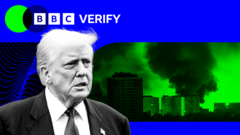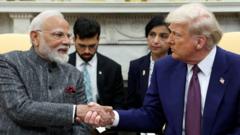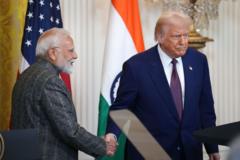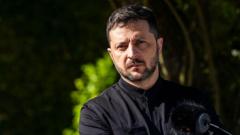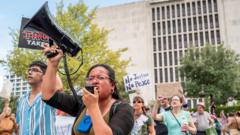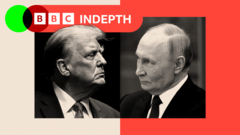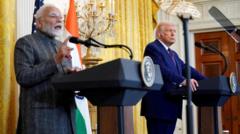As the conflict in Ukraine continues, authorities on the ground near Kharkiv illustrate the limitations of Western sanctions against Russia. While new drones and missiles, some with Western components, persist in attacks, Ukrainian officials call for more effective measures to halt the war without compromising justice for victims.
Sanctions on Russia Show Limited Impact as Ukraine Faces Ongoing Assault
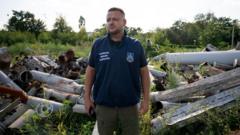
Sanctions on Russia Show Limited Impact as Ukraine Faces Ongoing Assault
Despite extensive Western sanctions aimed at limiting Russia's military efforts, the war in Ukraine rages on, revealing the resilience of Russian operations.
On the front lines of Ukraine, particularly around the city of Kharkiv, the impact of Western sanctions against Russia appears muted, as ongoing attacks underscore the persistent threat from the aggressor. Since the beginning of Russia's full-scale invasion, numerous countries have enacted sanctions to weaken Russia's military capabilities. However, the reality on the ground suggests these efforts may not be achieving their intended results.
Dymtro Chubenko, a prosecutor in the Kharkiv Region, showcases a grim collection of remnants from Russian assaults—an evidence repository featuring twisted metal and shattered munitions. "This is the material evidence with which we will prove Russia’s war crimes," he states, indicating the importance of these remnants in future legal cases. Among the wreckage is a Russian drone modeled after Iran’s Shaheed, which Russia has been deploying in significant numbers against Ukrainian towns.
Interestingly, many of these munitions are not entirely made in Russia; they incorporate various components sourced from Western countries. Chubenko notes, "Although Russia can evade sanctions, inaction is not an option." The burgeoning concern, as voiced by some Ukrainian officials, is whether intensified sanctions from the West, particularly on oil and gas exports, might significantly impact Russia’s war efforts.
The pressing question arises as President Trump signals a shift in relations with Russia, threatening to escalate sanctions if President Putin does not agree to a ceasefire. While Trump’s intent to enhance sanctions might seem a glimmer of hope, reality paints a darker picture for the civilians in Kharkiv, who have endured extensive losses throughout the conflict.
Amid the ruins, Police Colonel Serhii Bolvinov highlights the harrowing task of documenting civilian casualties. With nearly 3,000 confirmed deaths, including children, the toll of the war is deeply felt in the city. Colonel Bolvinov and his team meticulously investigate every civilian fatality, gathering DNA evidence to identify victims and establish accountability for the horrors inflicted upon them.
In the somber atmosphere of a cemetery outside Kharkiv, the physical and emotional scars of the conflict become painfully evident. Grieving families, including one mother who lost her 14-year-old daughter Sofia to a Russian strike, poignantly express their doubts about the prospects for peace. “Hope is fading,” she confides, reflecting a sentiment shared by many affected families.
Thus, while the battle for Kharkiv continues, and broader geopolitical dynamics evolve, the reality remains stark: achieving peace and justice in Ukraine appears to be a complex and ongoing struggle amid a backdrop of international tensions and human suffering.

